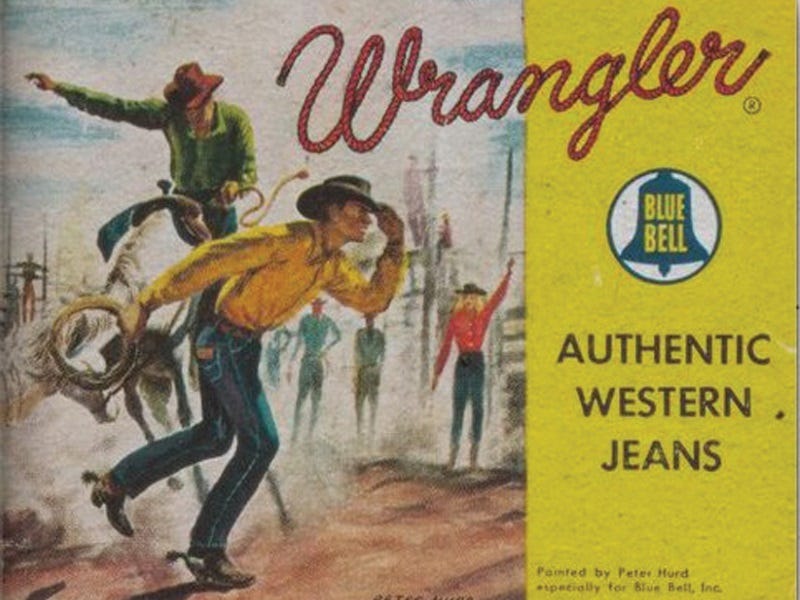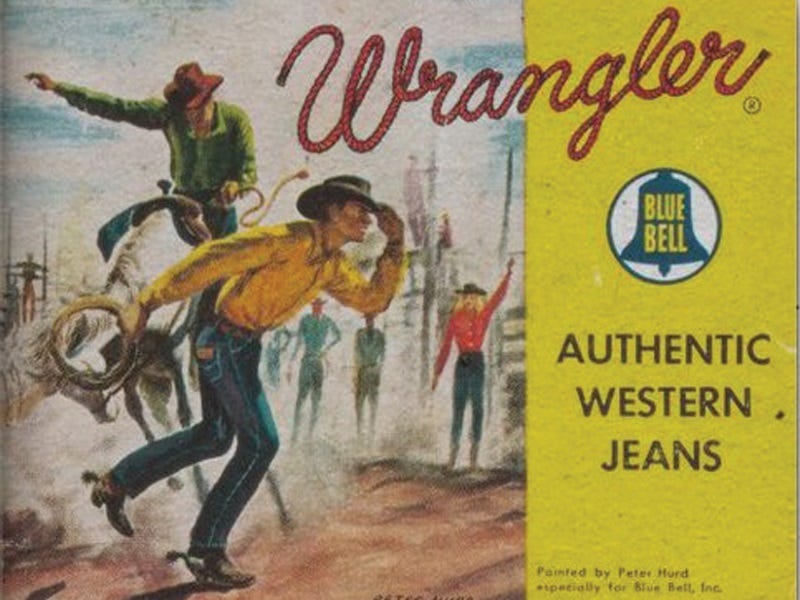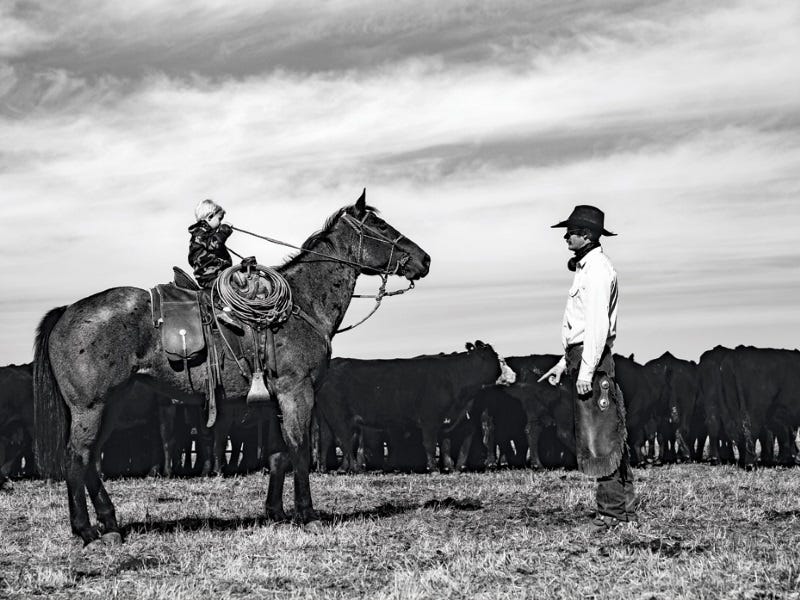Wrangler Jeans: A History


Practically every single piece of clothing has a label on it. Maybe it's on a tag on the back of the shirt, stitched somewhere small on a seam or some are bold with the label printed front and center. Wherever it is, most people don't pay much attention to it.
After all, it's just a piece of clothing, right? Wrong, check out our entire selection of the Wrangler brand online here.
But some of those labels, logos and brand names hold more weight than many think. Some have the backing of heritage and consistency while others are known for innovation and style. They are brands that are household names, brands that have proven time and again to be the best. In the realm of work and western wear, Wrangler Jeans has been one of those that remains a top brand worldwide, with a history and quality to back it up.
Wrangler Jeans: A History
Many may not be aware of the history behind one the most popular western jeans. While the iconic trademark became famous in the mid-1900s, the history of Wrangler starts in 1897, with C.C. Hudson. At age 20, Hudson left the Spring Hill Farm in Williamson County, Tennessee, for the growing textile town of Greensboro, North Carolina, and found a job in an overall factory, sewing on buttons for 25 cents a day rough.
Wondering what our selection of Wranglers for men looks like?
Seventeen years later in 1904, the overall factory shut down. Hudson, like many others, bought the factory's sewing machines, and with his brother, Homer, started the Hudson Overall Company, operating from a loft above Coe Brothers Grocery on South Elm Street in Greensboro. Fifteen years later, the business is booming. With the rise in sales, the brothers acquired a larger headquarters and changed the company name to Blue Bell Overall Company.
1926 is when things start to really get rolling when Big Ben Manufacturing of Kentucky buys Blue Bell for $585,000. Despite the merger between the two companies, the name remained Blue Bell with its headquarters still in Greensboro. The merger allowed for great production, sales and more importantly, innovation. In 1936, Blue Bell introduced Super Big Ben Overalls, which featured 100% Sanforized fabric that reduces shrinkage to less than 1%. This new fabric in overalls set a new standard for the growing industry.
The Blue Bell Company Buys the Casey Jones Company
In 1943, the ever-growing Blue Bell Company bought the Casey Jones Company, a key part of this history. The Casey Jones Company was a manufacturer of work clothing, but also had the rights to its rarely used brand name Wrangler.
Wrangler makes incredible performance and fashion jeans for women.
It wasn't until 1947, just four years later that the Wrangler name began to gain fame, when the first Wrangler authentic western jeans, which were designed by the celebrity tailor, Rodeo Ben, were introduced to the American public. Combined with public popularity, professional rodeo cowboys Bill Linderman and Freckles Brown wore-tested the 13MWZ jean and would later endorse the Wrangler name for durability, quality and authenticity. In fact, just a year later, the World Champion Cowboy, Jim Shoulders, signed on as an official endorsee of Wrangler. This is the same guy who went on to win a total of 16 world championships, including five All-Around, seven Bull Riding and four Bareback Riding World Titles. How's that for a quality backing?
Rodeo Tested Wrangler Jeans
So, Wrangler Jeans had the endorsement of world-famous cowboys, why stop there? In 1962, Blue Bell went international by opening a plant in Belgium, successfully launching the Wrangler brand in Europe. While it was getting its start across the ocean, the growth and popularity of Wrangler was staying strong in the States. Magazines featured Wrangler on covers and in 1974, the Pro Rodeo Cowboys Association officially endorsed Wrangler Jeans.
So, Wrangler has the endorsement of the western work world, not surprising. What is surprising is in 1982 when Wrangler becomes the primary sponsor of professional driver Dale Earnhardt and the legendary blue-and-yellow "Wrangler Jean Machine." NASCAR and Wrangler- strange combination, but one that works. Wrangler was the first apparel company to have significant involvement in NASCAR as Dale won the first three of his seven NASCAR championships that year. Well played, Wrangler, well played.
Wrangler even makes clothes for children, and they are awesome.
Blue Bell hit the real big time when it merged with VF Corporation of Pennsylvania in 1986, making VF one of the two largest jeans makers in the world, with 25% of the $6 billion market. Not bad for a company that started in a loft above a grocery store.

With the turn of the millennium, VF and Wrangler have seen even greater development beyond the "tried and true" jeans. In 2003, VF Jeanswear added two new brands to the Wrangler family: RIGGS WORKWEAR® by Wrangler®, a line of premium work clothes, and Wrangler® ProGearTM, hunting apparel for the serious sportsman.
In 2004, Wrangler® Jeans Company started its next generation by becoming the official jean of Dale Earnhardt, Jr. and the No. 8 race team. A year later, Wrangler debuted Aura from the Women at Wrangler®, offering 120+ fits and revolutionizing the way women shop for jeans, plus Wrangler launched the new premium brand, Genuine Wrangler®. And in 2008, Wrangler partnered with AQHA (American Quarter Horse Association) to develop The Ultimate Riding Jeans.
See our entire selection of Wrangler brand gear online by clicking here.
As you can see, Wrangler has a long history behind it, with a quality that has been backed time and again. It's an icon of the American western lifestyle with representation in another 22 countries. The "W" stitch on the back pockets is globally recognized, one that is copied by a lot of brands.
The rope logo shows that Wrangler jeans are designed for the outdoors, for freedom of movement, for surviving on your wits. With this type of history, heritage, and style, Wrangler is the original American outdoor denim brand.
Thank you for reaching out. We try our best to stock as many USA made products as we can but unfortunately not all of our products are. Please reach out to our customer support team directly for specific product questions at support@north40.com.
Thank you for giving us a heads up on this website issue. Can you give me more information regarding the images that are not loading for you on our website? I will be sure to have our web team take a look at this issue. Again, thank you for bringing this issue to our attention.
the images aren't loading correctly. I'm not sure why but I think its
a linking issue. I've tried it in two different web browsers and both show the same outcome.
